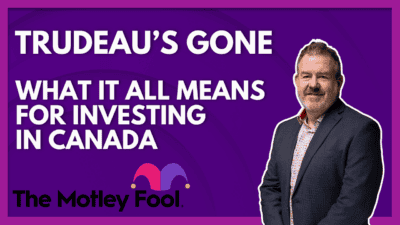If you’re a long time Transcontinental (TSX:TCL.A) shareholder, I feel your pain. Here you were entering the summer with a 31% gain on the year only to see all of it slip away and then some.
What happened?
The last time I wrote about Canada’s largest printer and a North American leader in flexible packaging in April, it had just acquired Coveris Americas for US$1.3 billion, a deal that analysts liked because it would allow its specialty packaging business to enter new markets and product categories while delivering cost savings and higher margins; ultimately making it more competitive in the packaging industry.
At the time it had a free cash flow yield of 13.9%, making it a value investor’s dream stock. Today, it’s down about $5 from early April; it would seem to be a great entry point for income investors who’ve managed to overlook Transcontinental’s stock over the past couple of years.
Anything out of the ordinary
As my Fool colleague James Watkins-Strand recently stated, Transcontinental is in the middle of a transformation that’s taken it from a failing printer and media owner to a company that generates 53% of its revenue from a business it only entered in March 2014 with the acquisition of Capri Packaging.
In the third quarter, Transcontinental increased its revenues by 58.7% and its earnings before interest and taxes by 14.2%. However, if you exclude the gains from the Coveris acquisition, it didn’t grow very much on either the top or the bottom line.
So, while Coveris’ integration should lead to economies of scale, the results so far suggest it has a lot of work to do if it wants to keep growing the packaging business, which to date has required more than $2 billion in capital investment.
Meanwhile, the printing business continues to see revenues shrink, but it is doing a good job rightsizing the business for those sales. In 2013, it had 27 plants generating $333 million in adjusted EBITDA from $1.65 billion in revenue; today, it generates $349 million in adjusted EBITDA from $1.43 billion in revenue out of 16 plants, 40% fewer than it had five years ago.
Not only has the printing business become way less troublesome, but it’s also more profitable, making the rationalization of its printing footprint a real success.
“On the printing side, we posted another good quarter excluding the non-cash effect of the end of certain newspaper printing contracts,” stated CEO Francois Olivier in its Q3 2018 earnings release. “In addition, the demand for our service offering to retailers remained relatively stable, which reflects the effectiveness of flyers for driving traffic to the store.”
If anything, the printing business is the more reliable of the company’s two operating segments.
That’s going to change
Despite Coveris delivering more modest profits than expected, Olivier is confident that its acquisitions will pay dividends in the coming quarters.
“Coveris Americas generated solid revenues, with more moderate profitability than anticipated,” Olivier stated. “That being said, we are maintaining our previously established targets and we are confident that this acquisition will further contribute to our profitability as of the fourth quarter.”
Not sold?
Transcontinental generated trailing 12-month cash flow of $502 million, it’s the highest level in many years. Expect this number to move even higher in the fourth quarter and beyond.
Bottom line
If you’re an income investor, the 4.0% dividend yield should get you interested, but it’s the capital gains potential that ought to make you buy its stock.
If this isn’t a great entry point, I don’t know what is.






